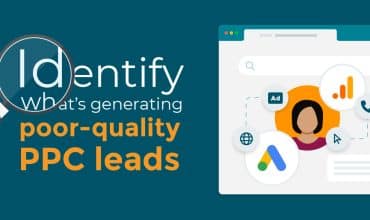Automotive marketing strategies for 2022
The end of the year is nigh (can you believe it!). As we reflect on the challenges of the past 18 months, we also look to the future and consider how an already-changed automotive sector will continue to evolve in our post-pandemic world.
During the pandemic, consumer digital activities increased dramatically. Adoption spanned all generations, with many new behaviours becoming ingrained in our lives as if they’d always been there. Consumer trust in carrying out transactions online grew significantly – online food shopping having the highest uptake – where before they may have hesitated.
But, with increased confidence in carrying out activities digitally came a dip in brand loyalty. Consumers have shown they are now more open to switching brands and trying something new.
So what does this all mean for the auto sector? Consumers have long wanted the ability to complete more of the car buying journey online. Younger generations who have grown up with digital media will increasingly demand this. The dealers that move quickly in this area will be the biggest winners.
With that in mind, how can auto dealers build their online profiles to capture more of the growing market of digital-savvy consumers?
Here are three digital marketing strategies you should be focusing on for 2022 and beyond.
Polish up your pay-per-click ads (PPC)
‘Forcing’ your way to the top of search results with PPC ads is another key way to increase your online visibility. If you’re already running ads – and I’m sure you are – sense check their effectiveness and performance going into 2022. Something to look at more closely as part of your ad campaign setup is negative keywords. Customers and competitors who needlessly click your ads will be costing you precious ad budget. But by using negative keywords when you set up your campaigns, your ads won’t be shown to anyone who searches those terms.
In 2022 you should also be looking at your existing customers and gathering insights to help with your PPC ads. When car dealer Sinclair Group needed to improve its Google Ads performance, the team used data from Mediahawk to better understand which keywords drive the most telephone calls and website visits.
Voice search
Voxly Digital reports that, at the start of 2021, 70% of people in the UK had used a voice assistant within the past month. Among them, 85% use the technology weekly, while nearly 50% use it daily. It goes without saying voice search is becoming a big deal.
Optimising your digital content so it gets picked up in voice searches is key. You’ll need to consider the different ways people may search using their voice, rather than when typing. Long-tail keywords, using phrases such as “How to”, “Where can I” and “What’s the best”, are more commonly searched as people use more natural language when speaking.
When creating content for your website, you need to take these search terms into consideration – both at a strategic level and a keyword level. Make sure you’re creating content that answers these queries first and foremost. Then optimise your copy for the terms people use during voice searches.
Make good use of existing content
Just because you created a piece of content three years ago, doesn’t mean it’s not still relevant. It also doesn’t mean everyone has seen it. Your blog posts, FAQs, videos and infographics take time and effort to create. So make sure you’re using them to their full effect and maximising the opportunities for your target audiences to see them.
It’s so easy to repurpose content for different channels and formats. Your podcasts can become blog posts, while your live streams can become watch-on-demand videos. Use your customer insights and analytics to understand how different customers prefer to consume content. Then you can re-promote your content in its repurposed form to get more views, more engagement and, ultimately, more sales.
Times have changed for the automotive sector. Consumer preferences and behaviours have been evolving for a long time. But the coronavirus pandemic has served as a catalyst, bringing greater demand for online services. And with it comes a need for dealers to engage like never before on digital platforms.

Download our free infographic, detailing all the sales trends and automotive marketing statistics you need to know.



